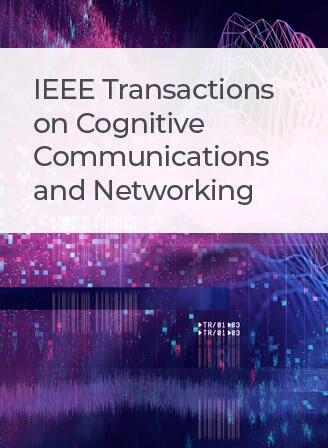Unmanned Aerial Vehicle-Based Hybrid Backscatter and Wireless Powered Communications: 3-D Trajectory Design and Resource Scheduling
IF 7
1区 计算机科学
Q1 TELECOMMUNICATIONS
IEEE Transactions on Cognitive Communications and Networking
Pub Date : 2024-08-08
DOI:10.1109/TCCN.2024.3440920
引用次数: 0
Abstract
This paper proposes a hybrid backscatter and wireless powered communications system based on unmanned aerial vehicle (UAV). UAV operates both as a source of radio frequency (RF) signals and an information collector. The system integrates passive information transmission (IT) via backscatter communication (BC) and active IT via wireless powered communication (WPC) to meet the requirements of low-power multi-function communication. At the same time, the system considers the LOS/NLOS channel at variable altitude. By jointly designing the 3D flight trajectory of UAV, the system time slot resources and the active transmit power of ground equipment can maximize the fair rate of ground equipment, and the system also considers various flight restrictions of UAV. Based on the block coordinate descent algorithm, this paper divides the original problem into several sub-problems and processes them separately, and finally obtains an approximate solution through joint iteration. The simulation results show that the hybrid backscatter and wireless powered communications system based on UAV proposed in this paper can significantly improve the fair rate of ground equipment compared with other benchmark schemes.基于混合后向散射和无线供电通信的无人驾驶飞行器:三维轨迹设计与资源调度
本文提出了一种基于无人飞行器(UAV)的混合反向散射和无线供电通信系统。无人飞行器既是射频(RF)信号源,又是信息收集器。该系统集成了通过后向散射通信(BC)进行的无源信息传输(IT)和通过无线供电通信(WPC)进行的有源信息传输(IT),以满足低功耗多功能通信的要求。同时,该系统还考虑了不同高度下的 LOS/NLOS 信道。通过联合设计无人机的三维飞行轨迹,系统时隙资源和地面设备的有源发射功率可最大限度地提高地面设备的公平率,系统还考虑了无人机的各种飞行限制。本文以块坐标下降算法为基础,将原问题分成若干子问题分别处理,最后通过联合迭代得到近似解。仿真结果表明,与其他基准方案相比,本文提出的基于无人机的后向散射与无线供电混合通信系统能显著提高地面设备的公平率。
本文章由计算机程序翻译,如有差异,请以英文原文为准。
求助全文
约1分钟内获得全文
求助全文
来源期刊

IEEE Transactions on Cognitive Communications and Networking
Computer Science-Artificial Intelligence
CiteScore
15.50
自引率
7.00%
发文量
108
期刊介绍:
The IEEE Transactions on Cognitive Communications and Networking (TCCN) aims to publish high-quality manuscripts that push the boundaries of cognitive communications and networking research. Cognitive, in this context, refers to the application of perception, learning, reasoning, memory, and adaptive approaches in communication system design. The transactions welcome submissions that explore various aspects of cognitive communications and networks, focusing on innovative and holistic approaches to complex system design. Key topics covered include architecture, protocols, cross-layer design, and cognition cycle design for cognitive networks. Additionally, research on machine learning, artificial intelligence, end-to-end and distributed intelligence, software-defined networking, cognitive radios, spectrum sharing, and security and privacy issues in cognitive networks are of interest. The publication also encourages papers addressing novel services and applications enabled by these cognitive concepts.
 求助内容:
求助内容: 应助结果提醒方式:
应助结果提醒方式:


